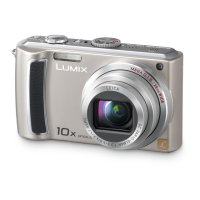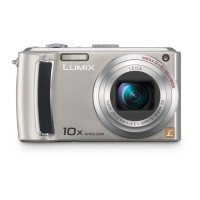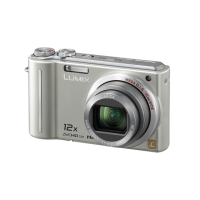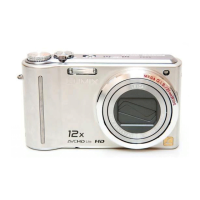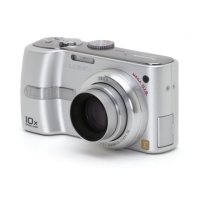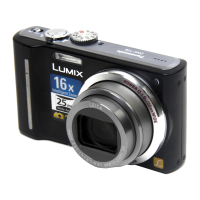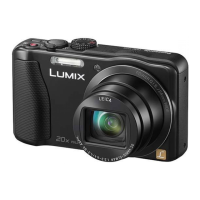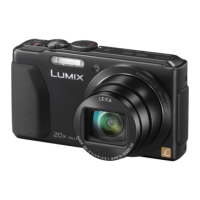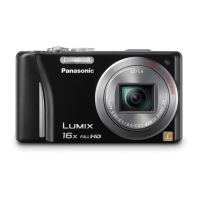90 VQT1B61
Others
4
Usage cautions and notes
When in use
Camera may become warm if used for long periods of time, but this is not a fault.
To avoid jitter, use a tripod and place in a stable location.
(Especially when using telescopic zoom, lower shutter speeds, or self-timer)
Keep the camera as far away as possible from electromagnetic equipment (such
as microwave ovens, TVs, video games etc.).
● If you use the camera on top of or near a TV, the pictures and sound on the camera
may be disrupted by electromagnetic wave radiation.
● Do not use the camera near cell phones because doing so may result in noise
adversely affecting the pictures and sound.
● Recorded data may be damaged, or pictures may be distorted, by strong magnetic
fields created by speakers or large motors.
● Electromagnetic wave radiation generated by microprocessors may adversely affect
the camera, disturbing the pictures and sound.
● If the camera is adversely affected by electromagnetic equipment and stops
functioning properly, turn the camera off and remove the battery or disconnect AC
adaptor (DMW-AC5PP; optional). Then reinsert the battery or reconnect AC adaptor
and turn the camera on.
Do not use the camera near radio transmitters or high-voltage lines.
● If you record near radio transmitters or high-voltage lines, the recorded pictures and
sound may be adversely affected.
Do not extend the supplied cord or cable.
Do not allow camera to come into contact with pesticides or volatile substances (can
cause surface damage or coating to peel).
Only use files from other devices if compatible with Design Rule for Camera File
system (Pictures are based on DCF (Design rule for Camera File system) and Exif
(Exchangeable Image File Format) standards, by Japan Electronics and Information
Technology Industries Association (JEITA)).
Caring for your camera
Disconnect battery/AC adaptor (DMW-AC5PP, sold separately).
Do not use benzene, thinners, alcohol, kitchen detergent, or chemically treated cloth
(can cause surface damage or coating to peel).
Wipe away dust or fingerprints with soft, dry cloth. Clear stubborn stains or rain/sea
water stains with a thoroughly wrung cloth, before wiping with a dry cloth.
When not using for a while
Remove battery and card (ensure that battery is removed to prevent damage through
over-discharge).
Do not leave in contact with rubber or plastic bags.
Store together with a drying agent (silica gel) if leaving in drawer, etc. Store batteries
in cool (15 °C-25 °C (59 °F-77 °F)) places with low humidity (40 %-60 %) and no
major temperature changes.
Charge battery once per year and use completely once before storing again.
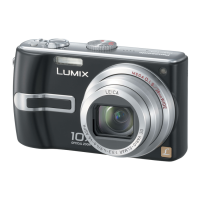
